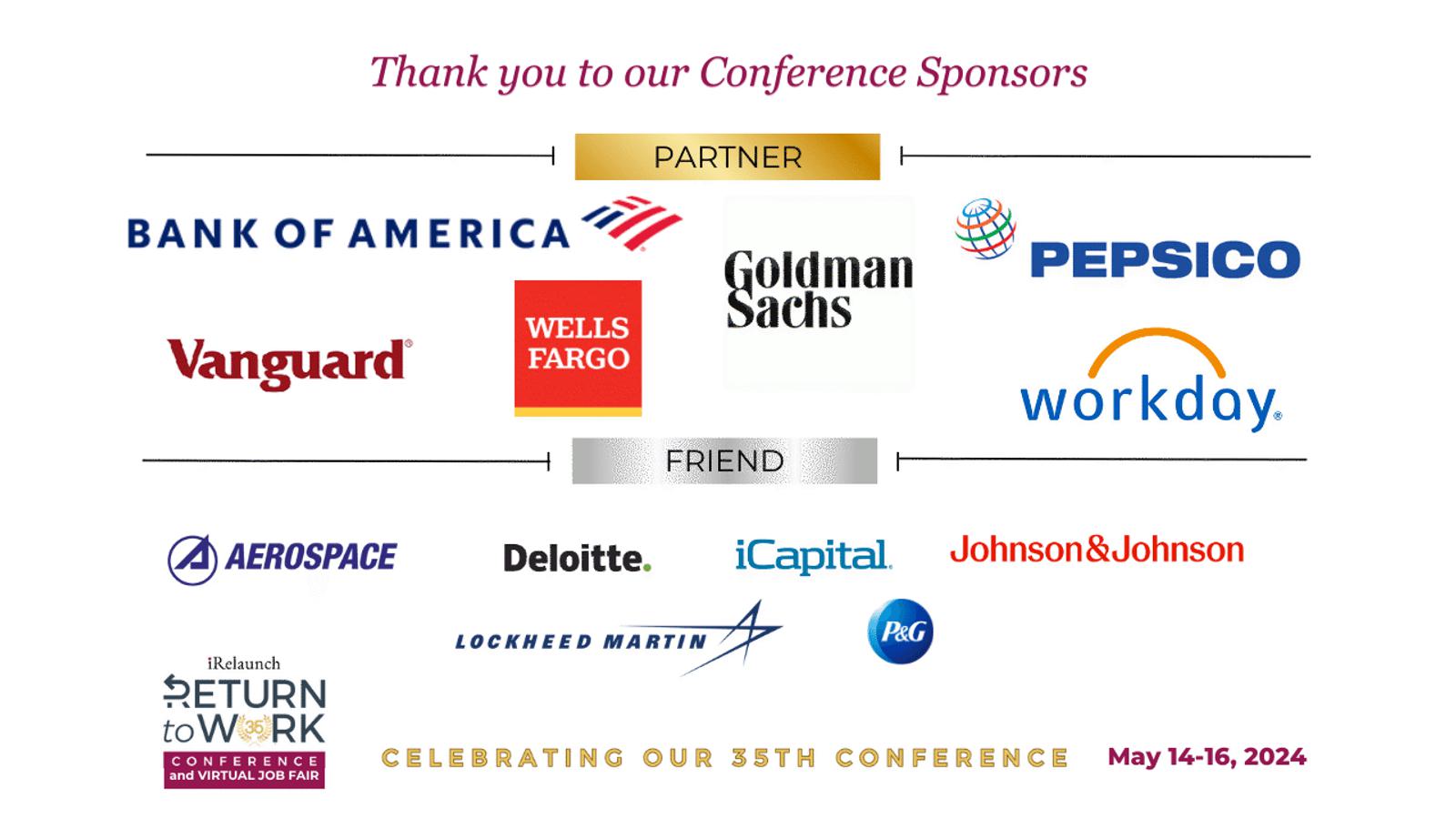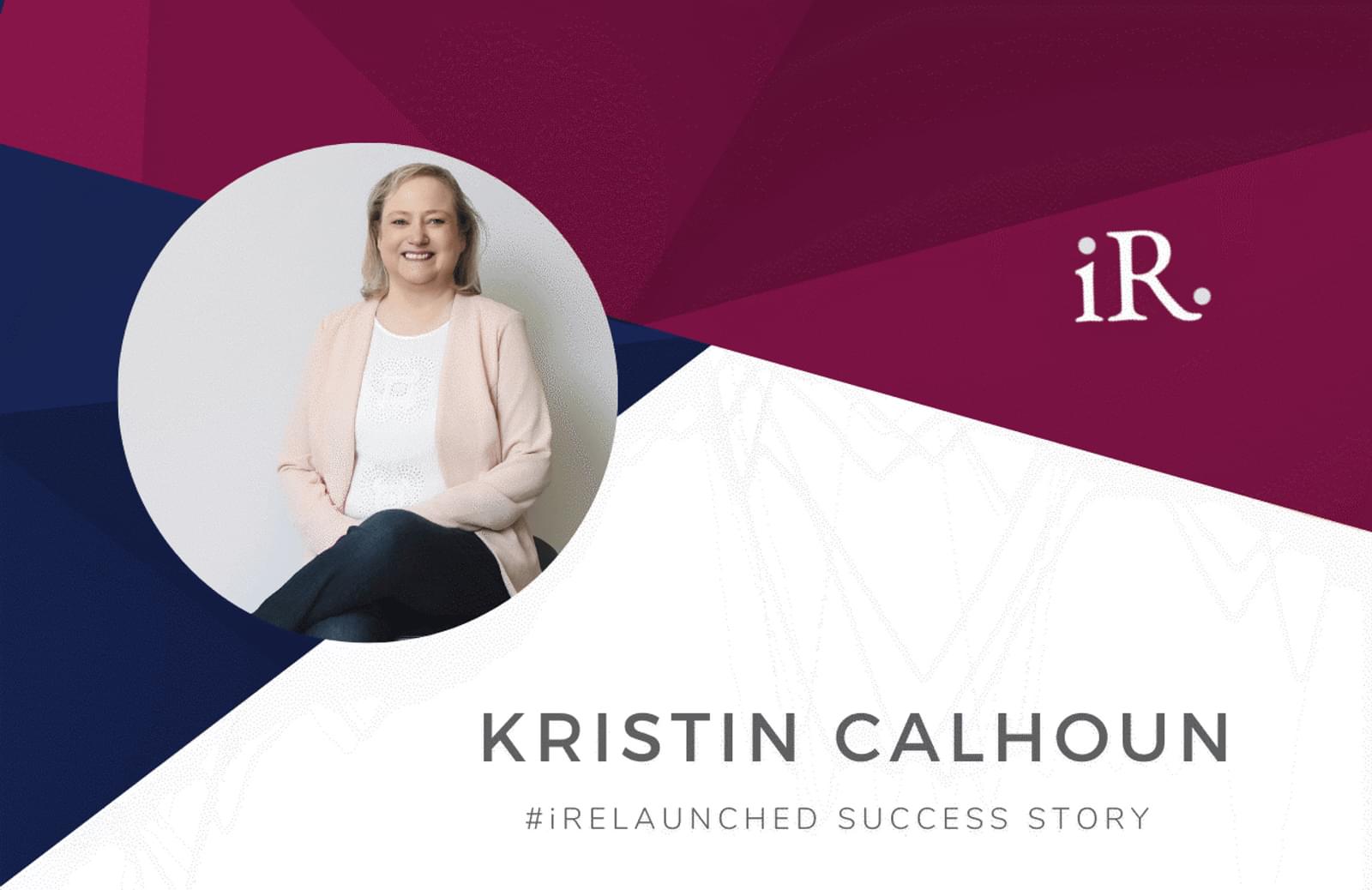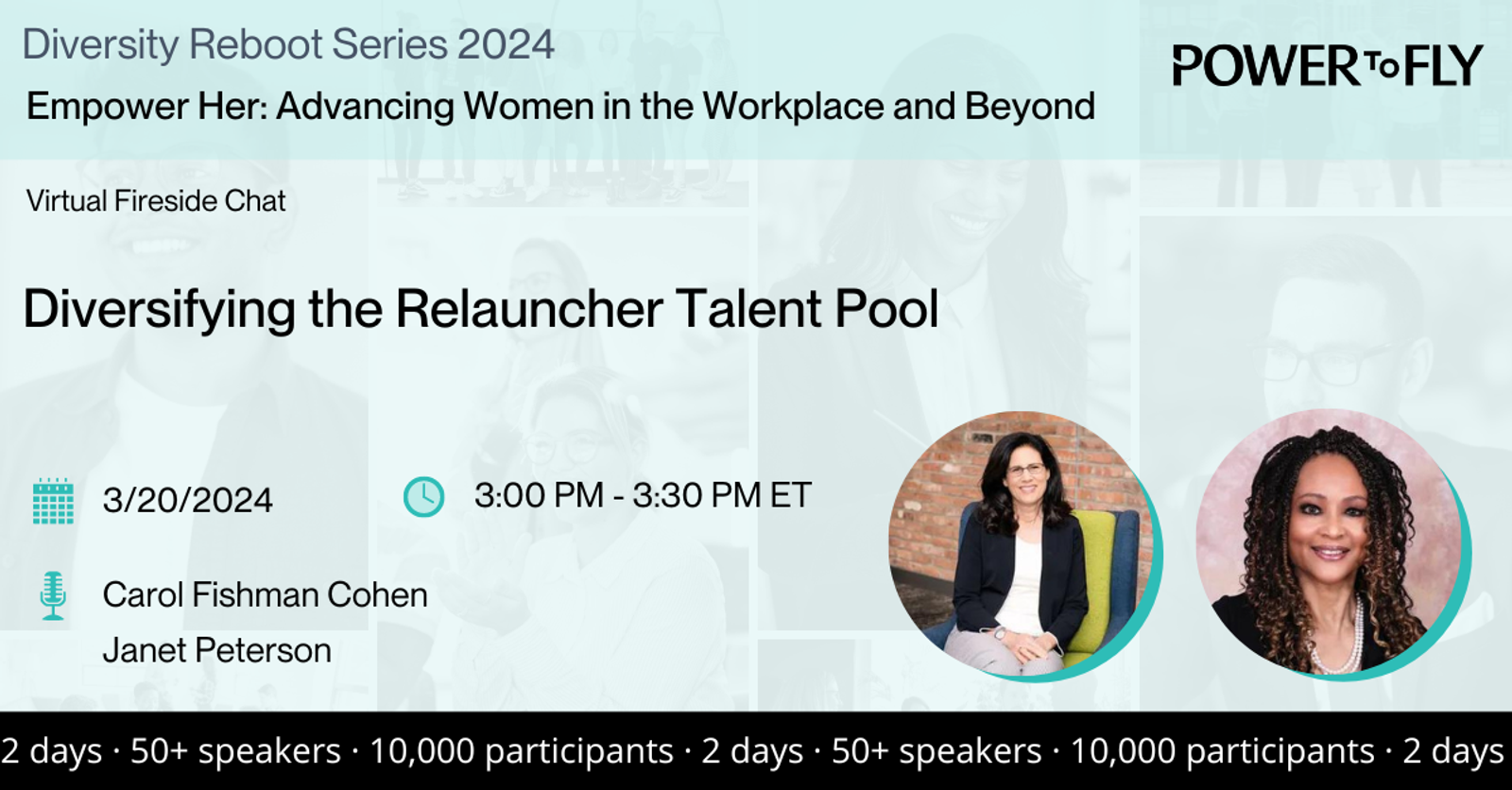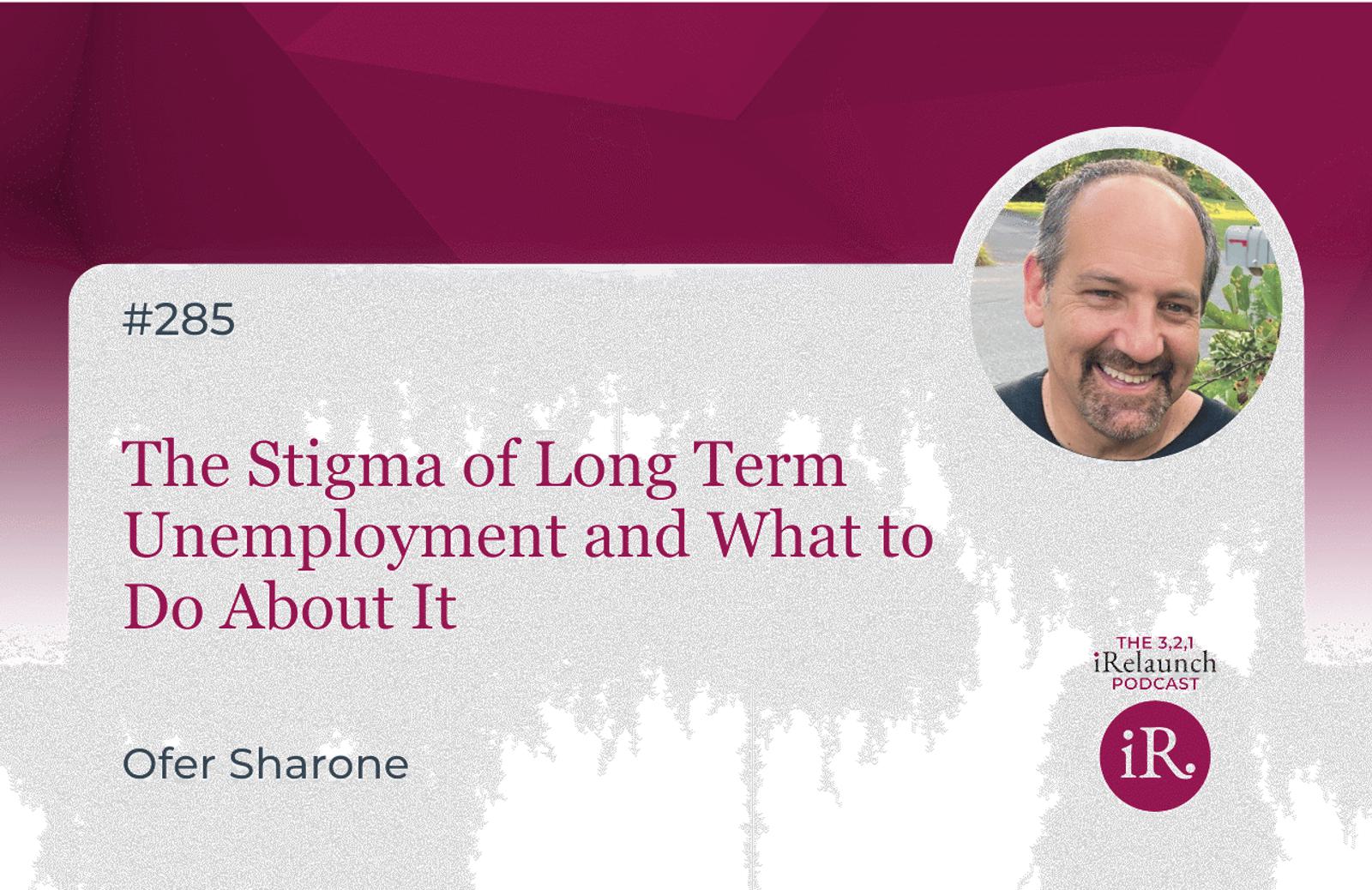
EP 218: General Motors Re-Imagines Its Take 2 Return to Work Program, with Sarah DeLadurantey
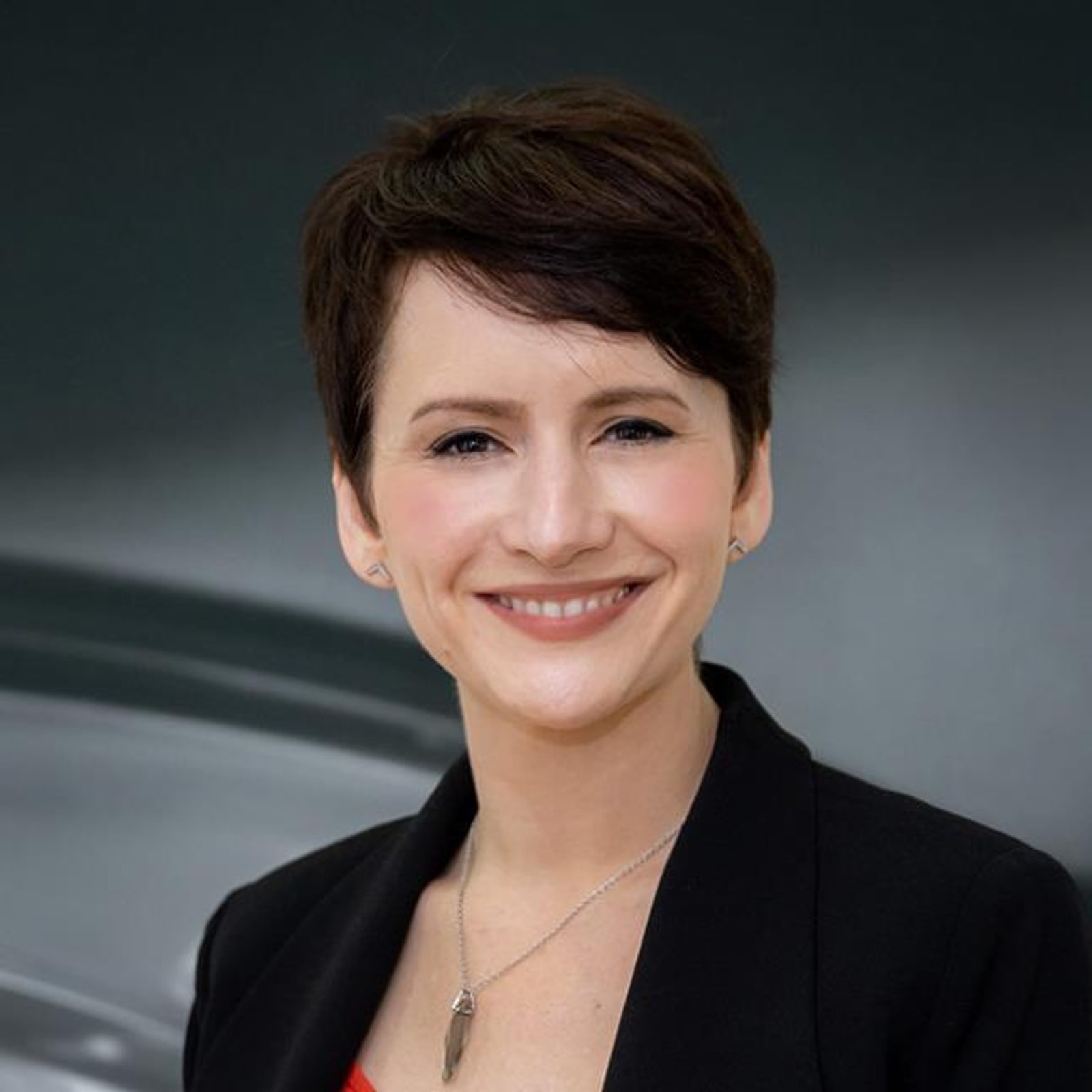
Episode Description
Sarah DeLadurantey supports General Motor’s Office of Diversity, Equity and Inclusion as a Talent Strategist for DEI Workforce Design. She is the program manager for Take 2, GM’s career reentry program, and led its recent transformation from a returnship to a direct-hire model. Sarah discusses how the Take 2 program has evolved and provides helpful guidance on how to answer an often-asked pre-screening question about whether an applicant has taken a career break. She also shares what the application process looks like, what to expect during the interview process, and gives specific tips on how to prepare for interviews.
Roles for the Take 2 program are currently closed, but are expected to re-open in the first quarter of 2022. Check GM's website for updates on opportunities.
Read Transcript
Carol Fishman Cohen: Welcome to 3, 2, 1 iRelaunch the podcast where we discuss return to work strategies, advice, and success stories. I'm Carol Fishman Cohen, CEO and co-founder of iRelaunch and your host. Today, we welcome Sarah. DeLadurantey. Sarah supports general motors, office of diversity, equity and inclusion as a talent strategist for DEI workforce design.
She is a program manager for take two GM's career reentry program and led its recent transformation from a returnship to a direct hire model. In this episode, Sarah will tell us about the take two program and how it has evolved as well as who is eligible and what the application process looks like.
Sarah. Welcome to 3, 2, 1 iRelaunch.
Sarah DeLadurantey: Thank you, Carol. It's great to be here.
Carol Fishman Cohen: It's so great to be speaking with you. [00:01:00] I just want to start by learning a little bit about your professional background and how you got involved in managing the take two program.
Sarah DeLadurantey: Yeah my background and my roots are in the recruiting space.
So I grew up in talent acquisition. When we first launched, take two, back in 2016, I was a recruiter. So I supported take two in that capacity. So sourcing and looking for talent, sharing talent with hiring leaders. If we fast forward to 2019, I was actually sitting in as a talent insights partners, so more on a data strategist role.
And I was tapped into the support the current program manager of our take two group at that time, she had asked me to support with hiring leader training so more insights on the landscape, the mindset, upskill redevelopment that Relaunchers might be looking for from a professional skill set standpoint. About mid cycle, that program manager was needing to head out on leave so I was [00:02:00] the natural choice to step in and cover that leave. So I actually got to pick up our fall 2019 cohort from about the mid-point through its ending point at 12 weeks where we made full-time offers. And it really just left me with an impression that this program was truly valuable in not just providing with us with exceptional talent, but the opportunity to watch that talent blossom and being their complete support system. From that point forward, it became even more of a passion point for me. I then stepped into our Sourcing team leadership role in 2020 and in 2021, when we picked up the redevelopment of the take two program, I led the redevelopment from that point forward.
So that was around June of 2021, where we really started to kick things off through its deployment and pilot in October of 2020.
Carol Fishman Cohen: Wow. So Sarah, you were really involved in the program for an extended period. And I see how it could give you a great perspective when you were leading the re-imagining of the program. But before we get into that, can you tell us a little bit about the history of take two when it began and how it's evolved since that first launch?
Sarah DeLadurantey: Yeah, absolutely. So we partnered with you all Irene launch in 2016 with a vision of really challenging ourselves to be a more inclusive employer and also tap into a really under-tapped and undervalued full of talent which are Relaunchers. We have the model at first was a 12 week returnship model, which aligned with a specific project. So at the end of your 12 week assignment, you'd have a deliverable, something that we could assess and then see if the competency level was where it should be. Our supports during this 12 weeks included mentorship, executive sponsorship and interactions, as well as a professional redevelopment cycle as well.
Those who were successful in that 12 week returnship, we made a best effort to make them an offer in the same role that they returned within. If you returned within a design release engineering role, the goal was that you'd be assigned to design release engineering full-time role at the end, hopefully within the exact same team that you're already placed.
The program was really highly successful. So 91% on average of our returners were eligible for full-time offers. And we had a cohort hosted twice per year, once in the spring. And once in the fall. Some of the evolution is that, we didn't consider gender as we moved on. It's not a women only program.
And we migrated to new areas of the business. Originally, it was only solely in engineering.
Carol Fishman Cohen: Thank you so much, Sarah, for outlining that I remember the origin of the program back in late [00:05:00] 2015 Jim was one of the inaugural members of the stem re-entry task force that we at iRelaunch run with the society of women engineers.
And I remember when the program launched in 2016. Quite a history there and also your eligibility rate at the end of the program in 91% is a really high number, and it confirms that the model of bringing people back in after career breaks through returnships and now through direct hire is it is very successful.
Can you take us through now what the new take two looks like and maybe give us some background in terms of- is the program where remote, is an in-person and what types of programming and support is involved in the new version?
Sarah DeLadurantey: Yeah. So one of the things that was really important to me was ensuring that we didn't lose the integrity of the take two model.
We got that 91% return eligibility rate for a reason. So I partnered closely with the previous program owner who was also very passionate about this point of maintaining integrity and we pulled together data and even produced a new survey data from the participants and from hiring leaders to understand what were the essential elements of the take two model as it existed that really bolstered them for success, for feeling confident and to be prepared for those full-time offers. So there are a few things that we identify is, we needed to ensure that there was still the mentorship in place. We identified that there was a need to add some additional support in place for technical learning and development, as well as ensuring that the teams that they were placed with them were prepared as well.
So not [00:07:00] every team might be ready depending on the balance of seasoned versus entry level versus is the hiring you know the hiring leader going to retire in two months or things that might cause additional disruption or my damage, the success rate of a relauncher. We have looked holistically at what made the program successful in the past? What will make it successful in the future and lifted and shifted those elements into a full-time model. So that's where we are today. So rather than it being a returnship, it is a 12 week on-ramp. So versus it being no benefits on day one. Now you have benefits on day one.
There's no disruption at 12 weeks. Hey, we're making you a full-time offer credit. It's going to be for a completely different teams. So we've smoothed it out. The process and the experience and created it a more competitive offer from our standpoint for relaunchers to join us by moving from a returnship model to this direct hire model. And I think the biggest thing is ensuring that everything that's available is also on demand.
I think that's the biggest lift and shift that we've had as well in the past with our cohort model. We only had, a development day mid cycle, and you'd go to that development day with your peers and that was the only time it was offered. Whereas now all of our learning and development from a professional standpoint is on demand.
It mirrors activities that are in your mentor, your take two mentor tool kits so that you have reinforcing activities that you do together. You can go back and review that at a later date. If you had a particularly busy week. It's not like it's one time, one and done. You also have access ongoing. There's a discussion board, some really cool stuff that we've added to be able to make a more digital community.
And one of the questions you asked Carol was around how the model looks from a remote versus onsite. So all the roles that we have in the pilot today are [00:09:00] reflective of what those groups and those organizations have along with our work appropriately model. So at GM, we have a work appropriate model, which means where can you do your job successfully?
That's primarily determined by the unit, the business unit. The roles that we've piloted in within engineering, product development, IT, manufacturing, engineering, and manufacturing. All of those are either in a hybrid or a fully onsite model, obviously within the manufacturing plant, you really need to be there.
So again, it's a bit role dependent as we move into the next iterations in 2022 I'm sure that we will have some roles again, depending on the particular role, the particular group, if the role designates that it is a fully remote role, there's definitely potential there for that as well. Today, again, like I said, the roles that we just recently piloted with were either hybrid, meaning you're within 50 miles of a GM location, you might [00:10:00] be onsite some days you might be working from home some days, and then some roles which are fully onsite.
Carol Fishman Cohen: Got it. Very helpful. And I just want to clarify for our audience that direct hire and what Sarah is describing is a program where you are hired as an employee from day one.
So as she's describing with benefits, et cetera. So you does that mean that people are applying to a specific role when they're applying to the program?
Sarah DeLadurantey: Yeah, that's a great question. With the roles that we just listed we picked some areas of the business where we know we have a lot of need and we need your talent here.
And we had job postings that were specifically listing take two. And individuals funnel through there. A screening process happened to ensure that they were eligible for the role. And then we paired up with our recruiting peers and our HR peers to find the best aligned, specific teams that had a hiring opening available.
So for instance, design release engineering, we had one posting rather than posting the 50 different possible areas that you could work, we had, you would apply to just one. And then on the back end, we said, okay, great. This person has, I don't know, experience in seats. We're going to go and make sure that they get on the seats requisition.
And there they go. And they get through that individual process for that specific role. So we tried to create as fluid as possible, but we did have roles listed as take two that were where we were funneling everyone to apply to.
Carol Fishman Cohen: Got it. Sarah, thank you for giving that detail. Can we spend a little time talking about eligibility now who is eligible for take two?
How long career break do they need to have? How do you even define career break? And can you talk a little bit about eligibility in general?
Sarah DeLadurantey: Yeah, absolutely. We look at a career break as two plus years away from your field. That could be working in another industry. It could be fully [00:12:00] unemployed. And then one of the other eligibility factors is at least two years of experience in your skill area before that break.
And the real reason for that is with less than two years of experience, we'd really see you more as entry level. Whereas if you have two years of experience within your field, you're really an experienced candidate walking in the door. You just happened to have a career break.
Carol Fishman Cohen: Exactly. And just so people don't self-select out of the program, but maybe they're still eligible.
We will sometimes get questions like if I was a substitute teacher or I did some occasional consulting or I taught as an adjunct lecture at a university, a couple of semesters. Does that make people ineligible or how do you treat that? Like occasional income stream or maybe like a side in income stream? Like, I'm working for Instacart or something like that, just to bring in a little side income. How do you treat those cases?
Sarah DeLadurantey: Yeah, so we really look at it as, did you take a break away from the core skills you'd need to deploy in that specific way. So I'll give you an example. In our manufacturing space, we have what we call manufacturing group leaders, which essentially are supervisors that leans heavily on your leadership core skills. If you took a break away from leading people for about two years, maybe you let a girl scout troop or something like that, but that's highly different. So in, in that case, we would consider you eligible if you did freelance. I don't know if you sold real estate or Mary Kay or something else that's really outside of your core field.
That's not the same skills you would need to necessarily deploy as a Java developer or a controls engineer or whatever that might be. Now, are there competencies that you may have leveraged along the way? Absolutely. So we encourage you to highlight those, even when you're interviewing, don't shy away from them.
You did have valuable experiences, even if you were away from your field, but we look at, is it directly aligned? Where are you a Java developer in the last two years? Full time? No, then you're eligible. Yeah.
Carol Fishman Cohen: Very helpful. Sarah, I want to ask you a question. That's actually a pretty hot topic right now in our private Facebook group.
The iRelaunch returned to work forum, and there's some discussion there about this topic of pre-qualifying questions. When people need to answer a few questions at the beginning of the online application process, and if they don't answer them correctly you can't really move forward in the process.
And the question that's hanging people up is if you ask a first of all, do you ask a pre-call question? Is it something like, have you taken a career break a two year career breaker or longer? If a person, did work occasionally on the side or outside their field? And they get nervous about whether they would be considered lying.
If they say yes, I took the career break. Can you give relaunchers some guidance around how to handle the answer to that question?
Sarah DeLadurantey: Yeah. I would say take the most liberal route. To be honest with you, the reason employers put that in place is to basically eliminate people who are currently working full-time in their field, who are applying for everything, because we really want to maintain the integrity of what we have out there as a posting.
It's just one way to help our recruiters sort through and get to the people who are really eligible. And that's you. So if you think about did you have a full time job in this specific field? Yes or no, you should be able, that's a pretty clear answer. And that's really what those questions mean.
And we do have one and it asks, have you been working in this particular space for, in the last two years? And we actually have a gradient you can choose from. And the reason that is, is again, it's just to help our recruiters [00:16:00] sort out the folks that are not really take two or relauncher eligible.
So I'd take the most liberal route possible.
I recommend just say yes, I honestly, even if you had a part-time job or, you took a free freelance UI design role that came your way that, if it was a couple of months. Things like that, that's not a full-time job. And that's really what that question is intended to do. So I'd highly recommend answer it. It's not a matter of like your integrity. It's just a matter of helping recruiters sort through the folks that we're really looking for. And if an employer is being very specific, that's what the phone screen is for. And you can even tell them. Hey, when I got to that question, I was a little confused.
And so we can discuss that. And let's clarify, and I'll tell you about my experience. Most employers, if they have a relauncher program available, their goal is they want to find you, so don't think that you're misrepresenting. The other thing I'd encourage you to think about is know that most hiring processes take a month or two before you're even gonna probably get to the formal interviewer and offer.
In that case. Think about the timeline. So if you're just shy of about two years. Still say yes, because again, it's, this isn't a hard and fast, line in the sand. There's always going to be a little bit of gradient. I think you'll find most employers are a little bit open on that. And again, you can say I anticipated the timeline's going to be around my two year mark.
Carol Fishman Cohen: Sarah. I can't tell you how reassuring this answer is because in the thread, people are worried that if they say yes, but then there's actually some working activity on their resume during the period that they would be viewed as lying on the application or something. But I see what you're saying. And in the spirit of the program, how you are encouraging people to answer that question, and it's just super helpful. So thank you.
Sarah DeLadurantey: No problem.
And actually let's just get into the interview process a little bit. Can you give us a little, you were talking about a timeline. Can you bring people through the timeline and what is the process? Is there a screening and how many interviews are there and what are the different stages?
Yeah, so at GM we actually have a pretty a lot, quite a bit of variation in the way that we interview and assess talent. And again, depending on the role that you're looking at for take two, there will be some variation as well. Some of the things that you can expect to be standard is one after applying for the take two specific requisition that we'll have posted out there, you'll get a call from a recruiter to conduct a phone screen.
So again, we're assessing for basic qualifications and then understanding where's the best fit for this person? We have various groups that are involved with our take to programming that we could place you in, but where's the best fit? So it could be one or more roles. So that's really the role of the screen is to say, are you eligible?
What spaces do we want to get you aligned to specifically, and then three, we want to prepare you, so we'll let you know. Okay. So I'm going to match you up to these two positions. Now, let me tell you about the hiring process, a process that's unique to each of these. Some of the things that we use at GM our higher view, which is a video assessment.
It's essentially you yourself, sitting in front of the camera, recording yourself, answering a question or a set of questions that's delivered. So all candidates go through that same process in some of our technical spaces like IT, we do have coding assessments, although those are more rare, some roles they will have you take the technical assessment.
And that's really just to understand what's the baseline of what this person is able to perform at with, from a coding perspective. But standard, most roles will go through phone screen. There might be a video assessment. It depends if it's higher volume areas, they will use that as a means to assess through and wade through the talent.
But not all rules have that. And then the final interview and the final interview is all of our interviews right now are still virtual. Even if it's an onsite role because of COVID. I imagine in the, I don't know, months, years, I'm not sure where we're at in this whole process someday, we'll probably have onsite interviews again. Today, we're still virtual for all roles. Our technology works with your laptop, your desktop, it can work with your phone. So it's pretty intuitive. Those interviews are anywhere from about 90 minutes to two hours, in length. Anywhere from about two to four interviewers will be present and we do lean a lot on behavior based questions.
So look up the star method. If you don't know what that is practice some questions with your partner or a friend. It's really basically it's a storytelling. That's what behavior-based questions and answers look like. Tell me about a time when. dot.dot. Then after the final interview then we would make an offer decision.
Depending on the number of candidates they may be having consideration that process can go very quickly. If you're one of only a couple or if you're the last person to interview, but if you're the first person to interview and you have, maybe five people behind you, you just have to know that the process can, vary a little bit on how quickly it runs depending on, the model that is specific to that role.
Yeah. So I would say, look up star based interviewing if you haven't done it before or aren't familiar or you're just out of practice. And I know it feels awkward, but practice with a friend. And honestly, if you get a recruiter on the phone, ask them, Hey, can we run through some behavior based questions?
Would you want to practice with me? I'm always happy to do that with candidates. And I think most folks that are looking to prepare relaunchers have the same goal in mind as well.
Carol Fishman Cohen: Wow. That's terrific. And I just want to remind our audience that higher view. It's spelled H I R E V U E. And we actually have a podcast with a relauncher who works at higher vue, talking about higher vue, explaining it and giving some resources at higher vue itself provides in terms of how to prepare for the higher vues video screening.
So I'd also direct you to that. Sarah one clarifying question on the coding assessments. Are they timed or not timed?
Sarah DeLadurantey: It depends on how it's set up, but generally they are timed.
Carol Fishman Cohen: All right. That's helpful to know.
Sarah DeLadurantey: I'm going to have to listen to your podcast on higher vue, because frankly, I probably need to work on my higher view skills too.
Carol Fishman Cohen: Yes, we will definitely get that information to you. But yeah we're finding a higher vue is used a lot, so we want to make sure that everyone was completely familiar with it. And it was really wonderful to have a relauncher view, the person that we interviewed about it. All right.So Sarah, can you tell our audience where they can find more information about take two or how they can find out more information about take two?
Sarah DeLadurantey: Yeah, absolutely. So if you go to careers.gm.com. In our about section, we have a mentorship and growth. There is a bit more information. There are pilot roles are closed now, but you'll see more of those being listed in Q1 of 2022. I'm going to estimate early February and I, you should be able to look for, take two in our search box and you'll see the postings.
But for now, again, careers. gm.com our mentorship and growth.
Carol Fishman Cohen: Excellent. And as we wind up our, I want to get to our final question, which is the one we ask all of our podcasts guests and that is what is your best piece of advice for our relauncher audience, even if it's something that we've already talked about today?
Yeah, absolutely. I think my biggest piece of advice is don't doubt yourself. And don't shy away from your gap in your resume. You are skilled and you bring unique perspective and experiences. And frankly, that's desirable for inclusive employers and that's where you want to work anyway. So don't view your gap as something that's a flaw.
It's a part of your story. So don't shy away from it. Don't hesitate to use examples. If you've got something from when you led something at your child's school and you had to lead other people and you have a question on leadership. Tell us about that. So I would say don't be shy, lean into it and know that you bring unique skills and perspective and you can do this.
That's wonderful advice. And it underscores what take two is all about that take two is a program where you have to have a career break in order to be eligible to apply for and participate in it. So it is a program and a process where you are not only welcome to talk about your career break, but you're really encouraged to talk about your career break.
So we're very excited about GM's take two program. It's one of the longer running programs, and now Sarah, you have led the complete re-imagining of it. And we're excited to see what's to come. And also what you're doing is really innovative. And so innovation is always this process of trying things and then tweaking or, making adjustments along the way.
And I feel like we're right in the middle of that right now with with take two. So very exciting, Sarah, thank you so much for joining us today.
Sarah DeLadurantey: Thank you so much, Carol. This was just absolutely a pleasure.
Carol Fishman Cohen: And thanks for listening to 3, 2, 1 iRelaunch, the podcast where we discuss return to work strategies, advice, and success stories.
I'm Carol Fishman Cohen, the CEO, and co-founder of iRelaunch and your host. For more information on iRelaunch conferences and events to sign up for our job board and access our return to work tools and resources go to irelaunch.com. And if you liked this podcast, be sure to rate it on apple podcast and your favorite podcast platform, and be sure to share this podcast with a friend on Facebook, Instagram, and other social media. Thanks for joining us.

